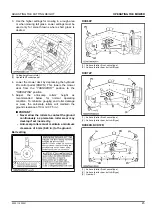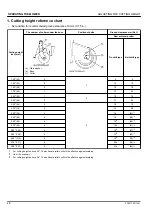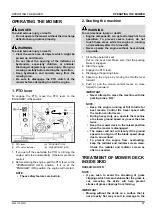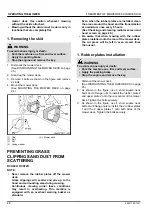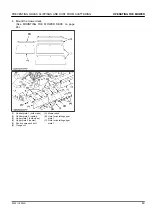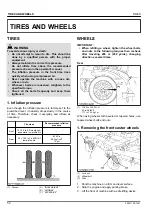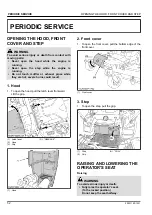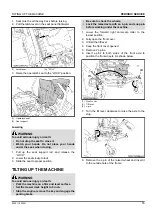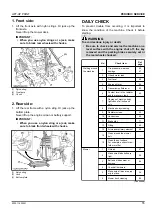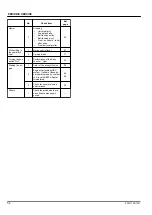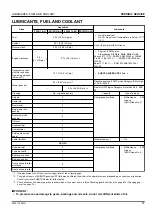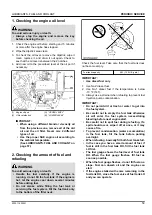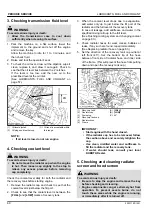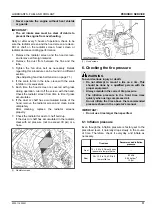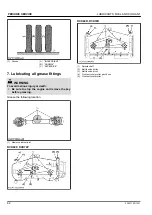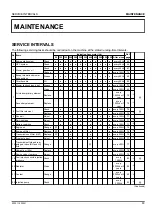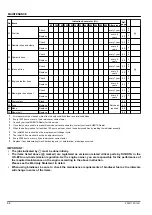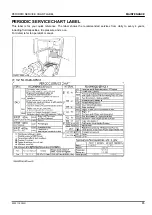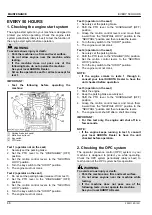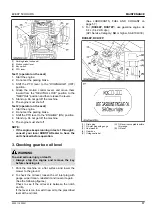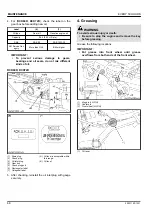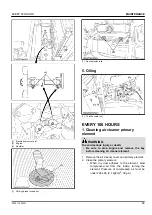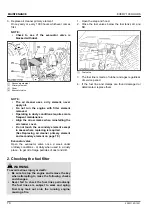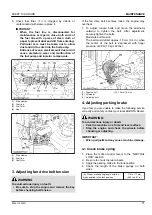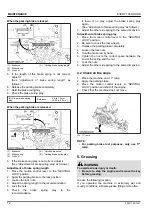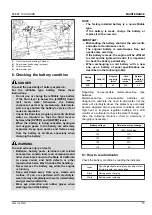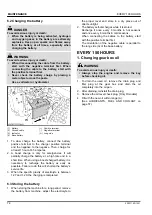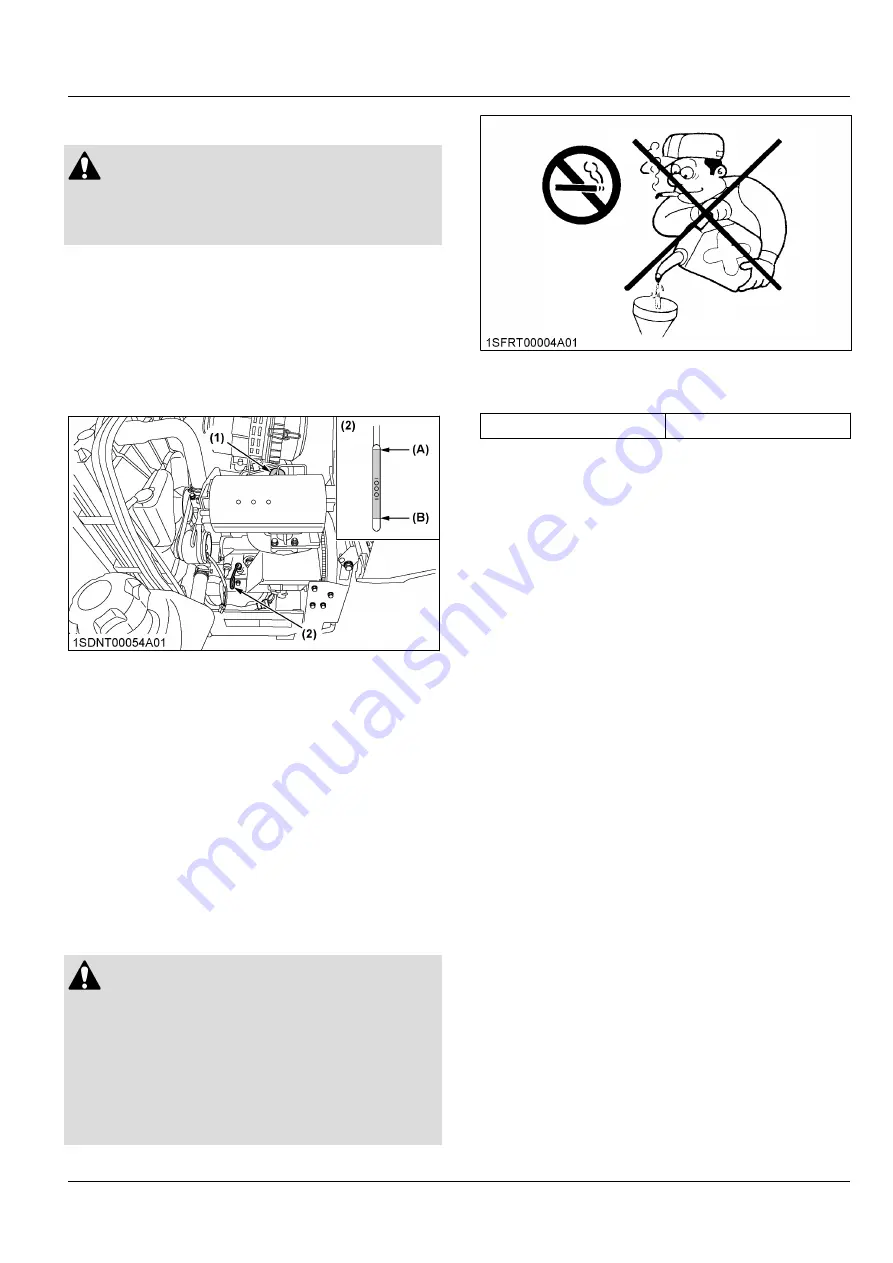
1. Checking the engine oil level
WARNING
To avoid serious injury or death:
• Always stop the engine and remove the key
before checking the oil.
1. Check the engine oil before starting and 5 minutes
or more after the engine has stopped.
2. Wipe the dipstick area clean.
3. To check the oil level, remove the dipstick, wipe it
clean, replace it, and draw it out again. Check to
see that the oil level is between the 2 notches.
4. Add new oil to the prescribed level at the oil port if
necessary.
(1) Engine oil port
(2) Oil level dipstick
(A) “UPPER LEVEL”
(B) “LOWER LEVEL”
IMPORTANT :
• When using a different brand or viscosity oil
from the previous one, remove all of the old
oil and the oil filter. Never mix 2 different
types of oil.
• Use the proper SAE engine oil according to
the ambient temperature.
(See LUBRICANTS, FUEL AND COOLANT on
page 57.)
2. Checking the amount of fuel and
refueling
WARNING
To avoid serious injury or death:
• Handle the fuel carefully. If the engine is
running, do not fill the fuel tank. If the engine is
hot, let the engine cool down several minutes
before adding fuel.
• Do not smoke while filling the fuel tank or
servicing the fuel system. Fill the fuel tank only
to the bottom of the filler neck.
Check the fuel level. Take care that the fuel tank does
not become empty.
Fuel tank capacity
49 L (12.9 U.S.gals.)
IMPORTANT :
• Use diesel fuel only
1. Use No.2 diesel fuel.
2. Use No.1 diesel fuel if the temperature is below
-10
℃
(14
℉
).
3. Always use a strainer when refueling to prevent fuel
injection pump contamination.
IMPORTANT :
• Do not permit dirt or trash or water to get into
the fuel system.
• Be careful not to empty the fuel tank otherwise
air will enter the fuel system, necessitating
bleeding before next engine start.
• Be careful not to spill fuel during refueling. If a
spill should occur, wipe it off at once, or it may
cause a fire.
• To prevent condensation (water accumulation)
in the fuel tank, fill the tank before parking
overnight.
• When refueling, basically fill both fuel tanks full.
• In the case you have a small amount of fuel, if
fuel is still in the fuel tank RH, fill the fuel tank
LH first.
• The fuel gauge shows the fuel level of fuel tank
RH. When the fuel gauge flashes, fill fuel as
soon as possible.
• When the fuel gauge flashes, do not fill fuel on a
slope. Fuel can absorb air and the engine can
stall.
• If the engine stalled with some remaining in the
fuel tank RH, close the fuel valve of fuel tank LH
and you can operate.
LUBRICANTS, FUEL AND COOLANT
PERIODIC SERVICE
ZD1211,ZD1221
59

